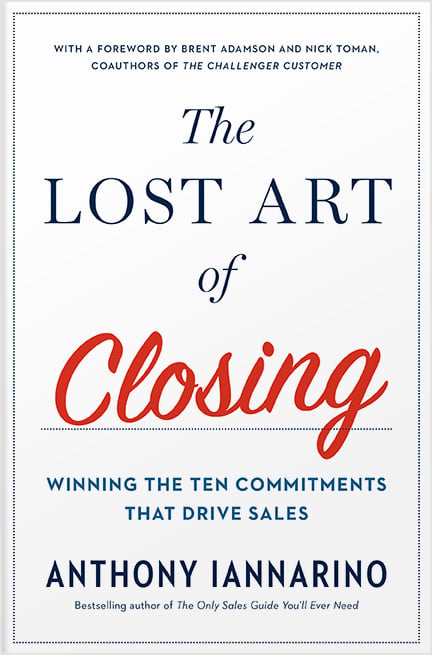The Gist:
- Some current sales practices actually prevent deals.
- We have been bamboozled into choosing efficiency over effectiveness.
- There is nothing more important to your results than effectiveness.
There are certain strategies, tactics, and practices that prevent sales instead of producing them. Many of them are now so prevalent that sales organizations embrace them, even when their prospective clients reject them. When these practices cause a negative outcome, we can classify them as “sales prevention” practices, things that decrease the odds of creating or winning an opportunity to help your prospective client improve their results.
The list here is long but worth studying, as every practice listed here will discourage your client from buying from you—now or in the future.


Email Prospecting. The best way to repel your prospective clients is email prospecting. As a way to test this statement, count the number of sales emails you received today that created an overwhelming urge to click the salesperson’s calendar link and schedule a meeting. Without knowing you or how many emails you received, I would be willing to bet that the answer is zero. Email prospecting identifies a salesperson as someone with little chance of ever creating value for their clients.
LinkedIn Connect and Pitch. This approach must work well enough for those who are willing to identify as a spammer, but those who value numbers over reputation rarely facilitate worthwhile sales. Like email prospecting, connect-and-pitch uses an acceptable tool (unsolicited messages) to create an unacceptable outcome (creating no value for the prospective client). It’s like bringing an engagement ring to a first date. C&P enables reputation damage and being blocked from communicating with prospects.
Avoiding the Phone. Recently, I saw a sales job advertised on LinkedIn promising that employees would not have to cold call any prospective clients. Of all the mediums available, only three allow for synchronous communication: face-to-face meetings, video meetings, and the telephone. If you really want to stunt your sales force’s growth, allowing them to prevent conversations—not to mention avoid the best synchronous medium for scheduling meetings—will certainly do the trick.


Transactional Approaches. Unless you’re a vending machine disguised as a sales organization, you must create value for your contacts, whether they’re decision-makers or some other kind of stakeholder. Too little value creation, something we might better describe as “not being helpful as it pertains to your prospective client’s decision-making,” is a great way to prevent sales. At best, it enables a weak first meeting.
Traditional Discovery. Asking your clients to tell you what their problems are is euphemistically quaint, an old-fashioned approach that proves that the salesperson is content to use the same commoditized approach as every other competitor. It screams irrelevance: without a defendable theory about what and why your client needs to change, a sales meeting wastes both parties’ time.
Qualifying. There is no reason to schedule meetings with people who can’t or won’t benefit from what you sell. But in an era of unprecedented complexity, refusing to spend time with people who have the very problems and challenges your company was built to solve—even if they aren’t officially “ready to buy”—is poor thinking. Waiting until the brink of the buying decision will cause you to miss situations that need the time and the help of an expert salesperson. This prevents new opportunities, many of them large and worth investing your own time and expertise.


Bad Sales Conversations. When the only vehicle you have to create value, differentiate yourself, and create and win opportunities is the sales conversation, providing your prospective client with a bad sales conversation is a bullet train to poor results. When you allow “why us” to dominate conversation, you prevent opportunity creation. Better sales conversations are the best tool for improving your results.
Low Effectiveness. Effectiveness should be your primary metric for meaningful growth. Effectiveness is measured by the salesperson’s ability to gain commitments, create value, open new opportunities, and close deals. You enable poor results when you allow low effectiveness.
No Accountability. A lack of accountability is detrimental to sales results. Selling is knowledge work, so it comes with more autonomy than many other roles. When you provide autonomy, you must balance it with discipline—including accountability to yourself and your organization. When you avoid accountability, you prevent sales.
No Sales Culture. You can always tell when a company or sales force lacks a sales culture. They don’t spend all their time talking about sales and let themselves be pulled in different directions. When selling doesn’t dominate a sales force’s time, energy, and attention, the lack of sales culture is a form of sales prevention.
Human beings tend to avoid change, even those of us who spend all of our time helping others change and improve their results. None of these weaknesses are fatal by themselves and all of them can be corrected, some faster than others. But they add up quickly, creating obstacles that make creating and winning deals harder than it has to be.
Do Good Work:
- What are the primary areas where you allow practices that harm sales?
- What do you need to change to improve your results?
- How do you build a self-sustaining sales culture?

Essential Reading!
Get my 2nd book: The Lost Art of Closing
"In The Lost Art of Closing, Anthony proves that the final commitment can actually be one of the easiest parts of the sales process—if you’ve set it up properly with other commitments that have to happen long before the close. The key is to lead customers through a series of necessary steps designed to prevent a purchase stall."
Buy Now







.jpg?width=768&height=994&name=salescall-planner-ebook-v3-1-cover%20(1).jpg)


